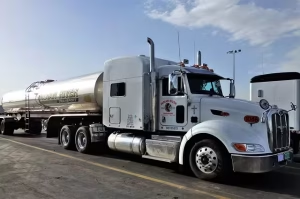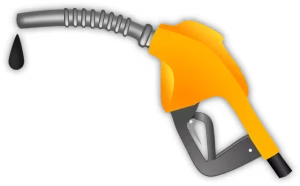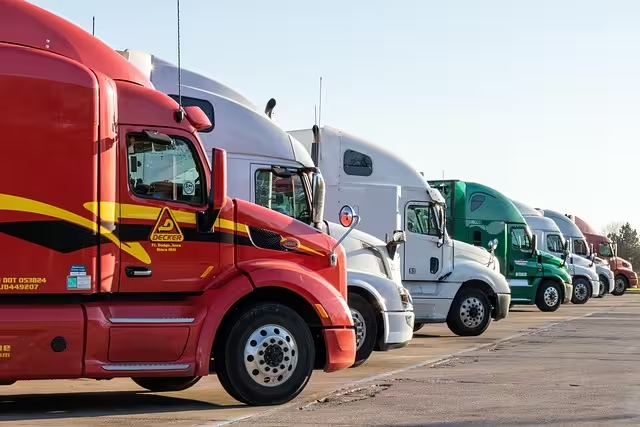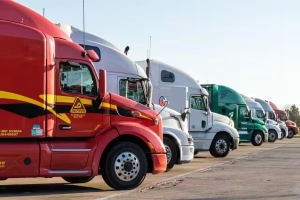In the world of fleet management, one number on the balance sheet consistently demands attention: the cost of fuel. For most companies with a fleet of vehicles, fuel represents over 20% of total operating costs, and in some cases, much more. It is a volatile, unpredictable expense that can make the difference between a profitable quarter and a significant loss. What if you could take direct control of that number and significantly reduce it with a single, powerful technology? This is not a futuristic concept; it is the reality for thousands of businesses actively using geofencing.
At its core, geofencing is the simple act of creating virtual boundaries around real-world locations on a digital map. For a fleet, this could be a customer’s warehouse, a job site, or the company yard. The challenges fleets face are clear: drivers take inefficient routes, vehicles spend too much time idling, and unauthorized trips burn fuel for non-business activities. These small leaks in efficiency add up to a massive financial drain over time. By implementing geofencing technology, a business can address these issues head-on, creating a strategic and highly effective solution for drastically improving fleet fuel efficiency and achieving a significant return on investment.
The Mechanics of Geofencing: How Does It Work for Fleets?
To understand the benefits, we must first understand the technology. Many people think of geofencing as something complex, but the idea is quite simple. Imagine you have a map and a crayon. You could draw a circle around your main office and decide that you want to know every time one of your trucks enters or leaves that circle. Geofencing does exactly this, but it uses digital tools instead of a crayon. The system is built on a few key pieces of technology that work together seamlessly.
First is the Global Positioning System, or GPS. Nearly every commercial vehicle today can be equipped with a small GPS tracking device. This device communicates with satellites to know its exact location at all times. This is the “dot on the map” that represents your vehicle. It provides the raw data on where your assets are in the real world.
Second is the fleet management software. This is the control center where the magic happens. This software, often provided as a service you can access through a web browser (known as Software as a Service, or SaaS), displays your vehicles on a digital map. Within this software, a fleet manager can use simple tools to draw virtual fences, or geofences, around any location they choose. These zones can be circles, rectangles, or custom polygons that match the exact shape of a property line, a specific highway corridor, or a restricted neighborhood. This process of setting up a geofencing zone is typically straightforward and requires no special programming skills.
Third are the triggered actions. A geofencing system is not just about seeing where a vehicle is; it is about taking action based on that location. When a vehicle’s GPS device crosses the virtual line of a geofence, either by entering or exiting, it triggers a pre-programmed event. The most common action is an instant alert sent via email or text message to a manager.
However, these triggers can be much more advanced. For example, entering a geofencing area around a job site could automatically punch a driver’s digital timecard, while leaving the company yard after hours could trigger a high-priority security alert. This active nature is what makes geofencing so much more powerful than simple GPS tracking. It turns location data into actionable business intelligence.
Key Benefit #1: Eliminating Inefficiency with Route Optimization

One of the largest and most uncontrollable sources of wasted fuel is poor route management. Every unplanned stop, wrong turn, or “shortcut” that ends up being longer adds miles to a trip. These extra miles directly translate into higher fuel costs, increased vehicle wear and tear, and lost time. A driver might deviate from the planned route for many reasons, from trying to avoid traffic to making a personal stop. Regardless of the reason, the result is the same: the company pays for the inefficiency. This is where geofencing provides a powerful solution for enforcement and analysis.
The core of the geofencing solution here is creating a system of planned versus actual analysis. Before a driver even leaves the yard, a fleet manager can map out the most fuel-efficient route for the day’s deliveries or service calls. Geofences can then be placed along this specific route or at each destination. If a vehicle deviates from this pre-approved corridor, the system can send an immediate alert to the manager. This allows for real-time course correction. A quick phone call can clarify if there is a legitimate reason for the change, like a road closure, or if the driver is simply off track. This immediate feedback loop is critical for preventing small deviations from turning into major expenses.
Furthermore, geofencing ensures that drivers stick to the most efficient paths between job sites. For industries like construction or home services, where vehicles travel between multiple geofenced locations daily, the system can log arrival and departure times automatically. This data is invaluable. A manager can look at the data over weeks or months and ask important questions. Are drivers consistently taking longer than expected to get from Point A to Point B? Is there a better route they should be using?
The data gathered from the geofencing system provides concrete answers, removing guesswork from route planning. This allows for the continuous improvement of routes for the entire fleet, leading to sustained fuel savings over the long term. Effective geofencing transforms route planning from a one-time suggestion into an enforceable, data-driven strategy.
Key Benefit #2: Tackling the Silent Fuel Killer – Excessive Idling

Of all the ways a fleet wastes fuel, vehicle idling is perhaps the most deceptive. It happens when the engine is running but the vehicle is not moving. It occurs in traffic, at loading docks, during lunch breaks, and while waiting at a customer’s location. While a few minutes of idling may seem harmless, these minutes add up quickly across an entire fleet. It is a silent killer of fuel efficiency because it provides zero productivity.
A commercial truck can burn nearly a gallon of fuel for every hour it spends idling. If you have a fleet of 20 trucks, and each one idles for just one extra hour per day, you could be wasting 20 gallons of fuel daily. At today’s prices, that is a significant operational cost for absolutely no return.
A geofencing system offers a direct and highly effective way to manage and reduce this waste. Fleet managers can use the software to create specific geofences around common idling spots, such as company yards, distribution centers, frequent customer sites, and rest areas. Within these zones, they can establish specific rules for idling. For example, a rule might be set that if any vehicle idles for more than five minutes within the geofenced area of a loading dock, an alert is sent to both the driver and the manager. This simple notification often serves as a powerful reminder for the driver to turn off the engine.
This is not about punishing drivers; it is about creating awareness and changing behavior. Many drivers simply do not realize how much fuel is consumed during idling. The data from a geofencing system makes the problem visible and measurable. Managers can generate reports that show which drivers and which locations are responsible for the most idle time. This information can then be used for targeted training and to develop better company-wide policies. The financial impact is easy to calculate and demonstrates a clear return on investment. The formula is simple:
Idlingcost=(TotalIdlingTime in hours)×(FuelConsumptionRate per hour of idling)×(Price per gallon of fuel)
By using a geofencing system to cut down total idling time, a company can see a direct and immediate reduction in its monthly fuel bill. It is one of the quickest ways that a geofencing investment pays for itself.
Key Benefit #3: Enhancing Driver Behavior and Accountability

A driver’s habits behind the wheel have a massive impact on fuel consumption. Two main issues contribute to this: unauthorized vehicle use and aggressive driving. Unauthorized use, such as using a company truck for personal errands on the weekend or taking a long, out-of-the-way route for a personal stop, adds miles that the company pays for. Aggressive driving, which includes habits like speeding, rapid acceleration, and hard braking, can reduce fuel efficiency by as much as 30%. Both of these behaviors not only waste fuel but also increase safety risks and liability. A robust geofencing strategy is an excellent tool for promoting accountability and encouraging more efficient driving habits.
To prevent unauthorized use, a manager can set up geofences around a vehicle’s approved area of operation. For example, a geofence can be drawn around the city or county where a service technician is supposed to be working. If the vehicle travels outside this designated zone, an alert is triggered. Similarly, time-based rules, often called “curfews,” can be applied. A geofence can be active around the company yard during non-working hours. If a vehicle leaves that yard at 10:00 PM on a Saturday, managers receive an instant notification. This feature is a powerful deterrent against using company assets for personal business, ensuring that every mile driven, and every gallon of fuel consumed, is for legitimate work purposes.
Geofencing also plays a key role in managing speeding. While telematics devices directly track speed, geofencing adds a layer of location-based context. For instance, a company-wide speed limit might be 65 miles per hour. However, when a vehicle enters a geofenced area around a school or a sensitive customer site, the system can automatically apply a much lower speed limit, such as 15 miles per hour. If the driver exceeds this zone-specific limit, an alert is generated.
This allows companies to enforce not just legal speed limits but also safety policies tailored to specific locations. By monitoring and addressing these behaviors, a geofencing system helps create a culture of efficiency and safety. It provides clear, objective data that can be used in performance reviews and training sessions, encouraging drivers to become more mindful of their impact on the company’s bottom line.
Answering Common Questions
When businesses consider new technologies, they often have practical questions about the real-world impact. Here are answers to some of the most common queries about using geofencing for fleet management.
How much fuel can geofencing save?
This is often the first question managers ask, and the answer depends on the fleet’s starting point. A company with already efficient operations might see savings around 5-10%. However, most fleets with average inefficiencies can expect to see fuel savings in the range of 10% to 20%. Consider a small fleet of 15 vehicles that spends $60,000 per month on fuel. A 15% reduction would result in savings of $9,000 per month, or $108,000 per year. These savings come from the combined effect of better routing, less idling, and eliminating unauthorized use. The best geofencing providers can help you analyze your current operations to provide a more precise estimate of your potential savings.
What is the ROI of geofencing for fleet management?
The Return on Investment (ROI) for a geofencing system is typically very strong and can often be realized within a few months. The calculation is straightforward: you add up all the financial benefits and subtract the cost of the system. The primary benefit is, of course, fuel savings. However, you should also include savings from increased productivity (more jobs completed per day due to better routing), lower maintenance costs (less wear and tear from fewer miles driven), and potential reductions in insurance premiums due to improved safety.
The basic formula is:
ROI=(Financial Gains−System Cost)/(System Cost)
For example, if the system costs $5,000 for the year but saves you $25,000 in fuel and productivity, your ROI is incredibly high. Because the savings on fuel are immediate, the payback period for a geofencing investment is often less than six months.
Is geofencing difficult to implement?
Years ago, this technology might have been complex, but today’s systems are designed for ease of use. The implementation process is generally simple. First, a small telematics device is professionally installed in each vehicle, which is a quick process. Second, you access the cloud-based software through a website. There, you use intuitive, point-and-click tools to draw your geofences on a map. You do not need to be a technology expert. Third, you set up your rules and alerts, deciding what actions you want to happen and who should be notified. Most geofencing companies provide excellent customer support and training to get you up and running quickly.
How does geofencing differ from basic GPS tracking?
Basic GPS tracking is passive; it shows you where your vehicles are on a map. You have to actively watch the map to see what is happening. Geofencing, on the other hand, is active and automated. You tell the system what you care about in advance by setting up your virtual boundaries and rules. The system then watches for you, 24/7. It does not just show you data; it tells you when something important happens that requires your attention. It turns passive dots on a map into proactive business intelligence, saving you time and allowing you to manage by exception rather than constant observation. The geofencing component is the “brains” that makes GPS data truly powerful for business operations.
Beyond Fuel: Additional ROI from Geofencing
While the primary driver for adopting geofencing is often fuel savings, the technology provides a wealth of other benefits that contribute to a strong ROI. These additional advantages improve nearly every aspect of fleet operations.
One major benefit is improved customer service through more accurate Estimated Times of Arrival (ETAs). By placing a geofence a few miles out from a customer’s location, you can set up an alert that automatically notifies the customer via text message when your driver is getting close. This proactive communication is highly valued by customers and reduces the number of “where is my truck?” phone calls your office has to handle.
Security is another significant advantage of a geofencing system. A geofence placed around your company yard can act as a powerful anti-theft device. If any vehicle or major piece of equipment leaves the yard outside of normal operating hours, an instant alert can be sent to you and even to local authorities. This allows for immediate action, dramatically increasing the chances of recovering stolen assets.
Finally, geofencing can completely automate and streamline processes like payroll and billing. When a vehicle enters and leaves a geofenced job site, the system logs those times with perfect accuracy. This data can be used to generate automated timesheets, eliminating errors and disputes. For billing purposes, you have a verifiable record of exactly how much time your team spent on-site, allowing you to create precise, trustworthy invoices for your clients. These operational efficiencies save administrative time and improve cash flow, adding even more value to your geofencing investment.
Conclusion: Putting Your Fleet on the Map of Efficiency
In today’s competitive business landscape, controlling costs is not just good practice; it is essential for survival and growth. Fuel is one of the largest and most challenging expenses for any company that relies on a fleet of vehicles. The implementation of geofencing provides a proven, data-driven method for taking control of this cost. By optimizing routes to ensure every mile is productive, drastically reducing wasteful idling, and improving driver behavior through accountability, the benefits are both immediate and substantial. A geofencing system transforms your fleet from a collection of liabilities into a network of highly efficient, intelligent assets.
However, viewing geofencing as merely a fuel-saving tool is to see only part of the picture. It is a comprehensive investment in operational intelligence. It enhances security, elevates customer service, and automates tedious administrative tasks. It provides the visibility and control needed to run a smarter, safer, and more profitable operation. Geofencing is not an expense; it is a fundamental component of modern fleet management.
Ready to see how much your fleet can save? Contact WebHeads United today for a personalized consultation on implementing geofencing technology.







